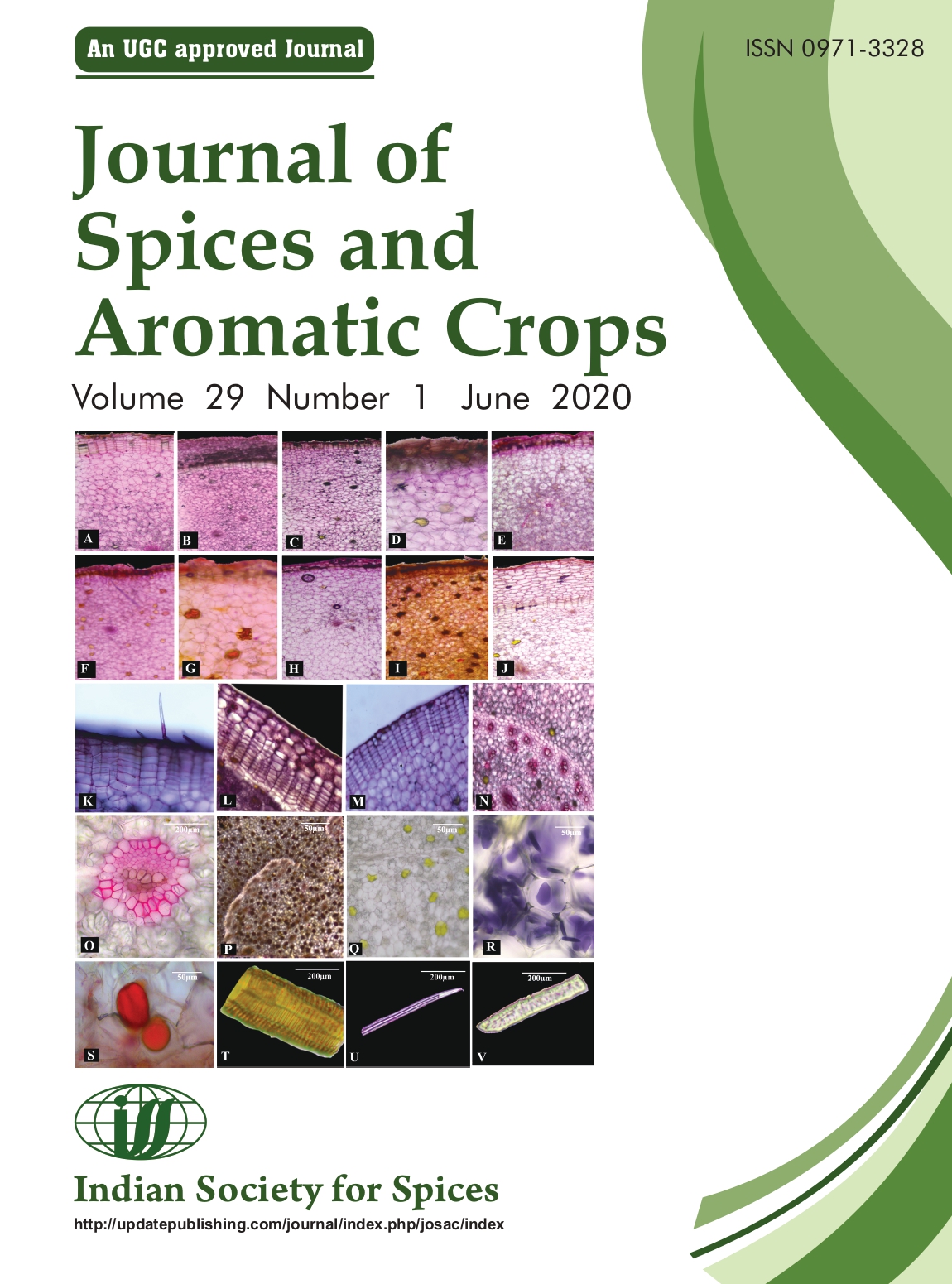Impact of water activity and temperature on the growth and afb1 production by two isolates of Aspergillus flavus on ginger
DOI:
https://doi.org/10.25081/josac.2020.v29.i1.6154Keywords:
Aflatoxin, Aspergillus flavus, isolate, lag phase, temperature, water activityAbstract
Impact of interacting effect of water activity (aw) and temperature on lag phase prior to growth, growth rate and aflatoxin production (AFB1) of two toxigenic isolates of Aspergillus flavus (AFg and AFt) on ginger was studied. A full 5 x 6 factorial design with five temperature regimes (20, 25, 30, 35 and 37C) and six aw levels (0.85, 0.90, 0.93, 0.95, 0.982 and 0.995) replicated three times and basic media 5% milled ginger agar media was used in the study. A 6-day-old mycelia + 9 ml sterile water supplemented with 0.05% (w/v) Tween 80 was used as inoculum for each treatment. 2 μL of the inoculum was one-point centrally inoculated in each plate and incubated appropriately. Evaluation of fungal growth was done daily and AFB1 production analysed after 10 days. Data showed that in all cases, no growth was observed at 0.85 aw at all temperatures and at 0.9 aw at 20oC, suggesting limits for growth could vary. Optimum conditions for growth of A. flavus was 0.98–0.995 aw and 30-35oC, while the level of AFB1 production varied considerably among the isolates. Maximum AFB1 production was observed at 0.98 aw at 20-30oC in both isolates. This result could be useful in the post-harvest handling of ginger in stores against A. flavus colonisation and AFB1 production.






 .
.